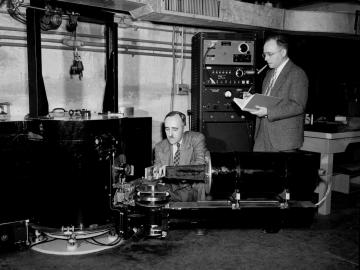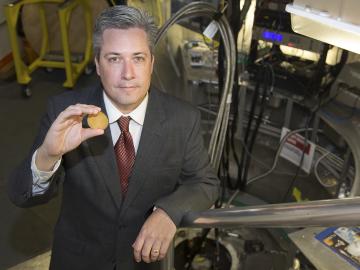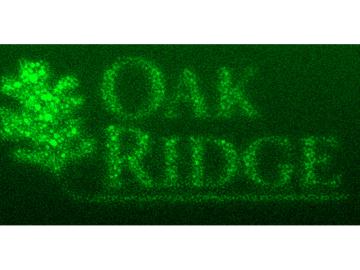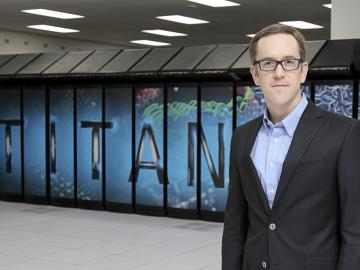Filter News
Area of Research
- (-) Materials (43)
- (-) Neutron Science (8)
- (-) Nuclear Science and Technology (6)
- Advanced Manufacturing (4)
- Biological Systems (4)
- Building Technologies (2)
- Chemistry and Physics at Interfaces (4)
- Clean Energy (51)
- Energy Frontier Research Centers (5)
- Fossil Energy (1)
- Functional Materials for Energy (4)
- Geographic Information Science and Technology (1)
- Isotope Development and Production (1)
- Materials Synthesis from Atoms to Systems (3)
- Materials Under Extremes (4)
- Quantum Condensed Matter (1)
- Reactor Technology (1)
- Renewable Energy (1)
- Supercomputing (12)
- Transportation Systems (3)
News Type
Media Contacts

The recently discovered element 117 has been officially named "tennessine" in recognition of Tennessee’s contributions to its discovery, including the efforts of the Department of Energy's Oak Ridge National Laboratory and its Tennessee collaborators at Vanderbilt University and the University of Tennessee.

Two researchers from the Department of Energy’s Oak Ridge National Laboratory have been elected fellows of the American Nuclear Society. Alan S. Icenhour and Jess C. Gehin were recognized for their outstanding scientific and technical leadership in nuclear energy rese...

Researchers at the Department of Energy’s Oak Ridge National Laboratory have demonstrated that permanent magnets produced by additive manufacturing can outperform bonded magnets made using traditional techniques while conserving critical materials. Scientists fabric...

In a new twist to waste-to-fuel technology, scientists at the Department of Energy’s Oak Ridge National Laboratory have developed an electrochemical process that uses tiny spikes of carbon and copper to turn carbon dioxide, a greenhouse gas, into ethanol. Their findin...

Samsung Electronics has exclusively licensed optically clear superhydrophobic film technology from the Department of Energy’s Oak Ridge National Laboratory to improve the performance of glass displays on smartphones, tablets and other electronic devices.
O...

The Spallation Neutron Source marks a decade as a leading neutron science facility today at the Department of Energy's Oak Ridge National Laboratory.
“The Spallation Neutron Source has opened neutron scattering science to a new generation of researchers at a ti...

The lighter wand for your gas BBQ, a submarine’s sonar device and the ultrasound machine at your doctor’s office all rely on piezoelectric materials, which turn mechanical stress into electrical energy, and vice versa. In 1997, researchers developed piezoelectric...

Scientists at the Department of Energy’s Oak Ridge National Laboratory are the first to harness a scanning transmission electron microscope (STEM) to directly write tiny patterns in metallic “ink,” forming features in liquid that are finer than half the width of a hum...

The US Department of Energy announced today that it will invest $16 million over the next four years to accelerate the design of new materials through use of supercomputers.

Theory and experiment push each other to expand the frontiers of physics. Now, the Neutron Sciences Directorate at the Department of Energy’s Oak Ridge National Laboratory has both.
Cristian Batista, a theoretical condensed matter physicist with a joint appointment at ORNL and th...




